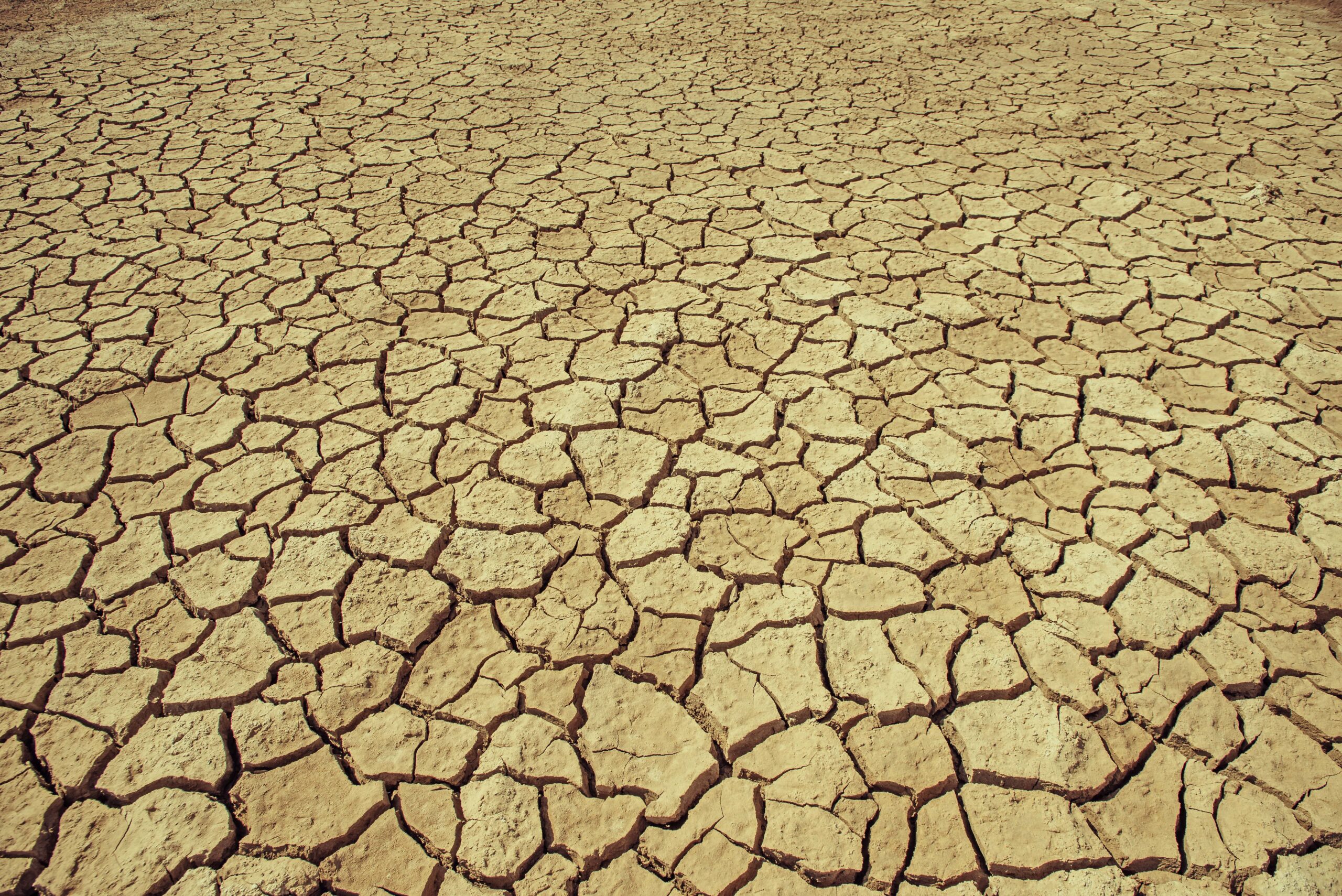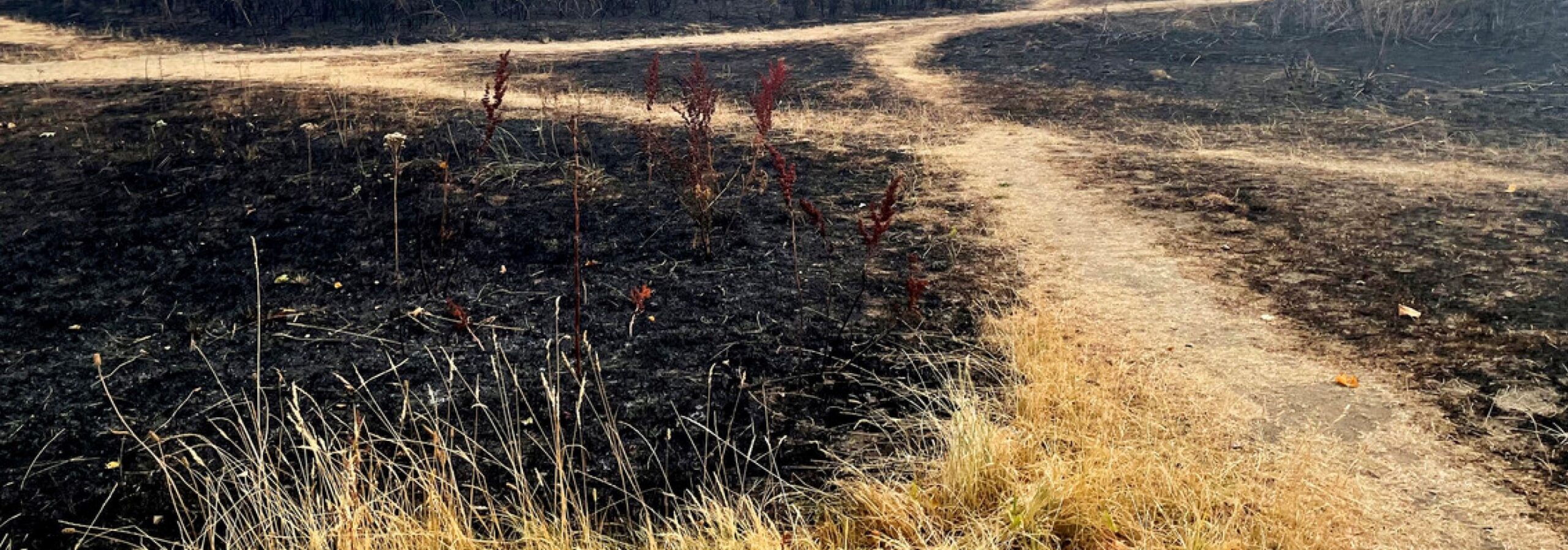The Event
From boreal winter 2020/21 onwards, a large region in West Asia, encompassing the Fertile Crescent around the rivers Euphrates and Tigris as well as Iran has suffered from exceptionally low rains and elevated temperatures. This five-year-long drought has led to severe water scarcity across the region. In Iraq, 2025 has become the driest year on record since 1933, with water levels in the Tigris and Euphrates dropping by up to 27 percent due to poor rainfall and upstream restrictions. In neighbouring Syria, rainfall has fallen by nearly 70 percent, crippling 75 percent of the country’s rain-fed farmland and leaving an estimated wheat shortfall of 2.73 million tonnes. The impacts have been similarly severe in Iran, including in Teheran, the capital of Iran, home to more than 10 million people, who, at the time of writing in November 2025, may need to evacuate if no rain arrives by December (Reuters, 2025). Five years of drought have meant that the dams serving the city have not been replenished, and with 2025 receiving even less rain than the already dry five years previous the water crisis has become extremely severe (Al Jazeera, 2025)
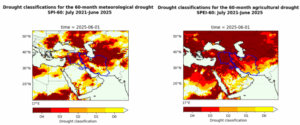
In 2023, World Weather Attribution undertook a rapid attribution study of the drought conditions as they were in mid-2023 and had already led to severe impacts on agriculture and access to potable water and caused a famine in Syria affecting 12 million people. By combining a detailed assessment of exposure and vulnerability in the three affected countries: Syria, Iraq and Iran with a probabilistic attribution of the change in likelihood and intensity of the drought hazard with anthropogenic climate change the study found that there is strong evidence that human-induced climate change has increased the risk of drought by more than a factor of 10 and that this change has rolled-back development gains after the conflicts in the region.
Here, we perform a super-rapid attribution study, updating the observational analysis from 2023 to include the additional dry years up until October 2025, and highlighting additional insights on vulnerability and exposure that emerged over the last two years.
Key Messages
- Iran is facing its fifth consecutive year of drought in 2025. The current acute crisis is part of a longer term water crisis in Iran and the wider region that results from a range of issues including, frequent droughts with increasing evaporation rates, water-intensive agriculture, and unsustainable groundwater extraction. These combined pressures contribute to chronic water stress in major urban centres including Tehran, reportedly at risk of severe water shortages and emergency rationing, while also straining agricultural productivity and heightening competition over scarce resources.
- Agriculture consumes over 90% of Iran’s water. Water stress especially impacts farmers whose incomes depend on irrigation-intensive crops. Reduced yields, higher input costs, and limited livelihood alternatives heighten vulnerability, contributing to internal migration especially to cities, and increased dependence on short-term coping strategies. These stresses intersect with broader economic challenges, constraining the ability of households and local authorities to adapt effectively.
- Rapid land-use changes across the wider region, including overgrazing and agricultural expansion, have accelerated soil degradation and desertification, reducing the landscape’s natural resilience to drought. The drying of wetlands illustrates how prolonged drought can threaten habitats for endemic and migratory species, while increasing dust pollution that lowers air quality for surrounding populations.
- The region has experienced several years of low rainfall that is responsible for depleting reservoir levels. Despite the large year-to-year variability in the annual rainfall, both regions exhibit a decline in rainfall both in the annual totals and the five-year accumulated totals. In addition, temperatures are increasing substantially, which increases evaporation and dries out soils, suggesting a shift towards drier and more intense drought conditions under global warming.
- The combination of low rainfall and high evaporative demand together results in agricultural drought. Iran, as well as the whole Tigris and Euphrates basins (TE-basin) has been experiencing ‘extreme’ to ‘exceptional’ agricultural drought since 2020, making it the worst drought on record in Iran and among the most extreme droughts in the TE-Basin based on Standardised Precipitation Evapotranspiration Index (SPEI), a standardised measure of drought severity combining rainfall with evaporative demand.
- In today’s climate, which has warmed by 1.3C due the burning of fossil fuels, the severity of the last one year of drought in Iran (SPEI-12) in the water year (running from Jul 2024 to Jun 2025) has a return period of 10 years. In a 1.3°C cooler world a year-long drought like this would only be expected every 50 to 100 years. Considering the severity of the drought event over the last five years (SPEI-60), such events are relatively common in today’s climate, but would have been only expected to occur two to three times per century, in a 1.3°C cooler world.
- Climate change also increased the intensity of the five-year-long drought from classification normal conditions to D3 (‘extreme’ drought) and D4 (‘exceptional’ drought) in Iran and the TE basin, respectively. This means that this combination of rainfall and temperatures would not now be classified as a drought at all without human-caused climate change.
- While low rainfall years would have occurred in this region even without climate change due to its naturally arid climate and the high year-to-year variability in rainfall, multi-year drought events that are now ‘extreme’ to ‘exceptional’ would have been very rare in the past. The results for the five-year-long drought show an even stronger impact of human-induced climate change compared to the analysis on the three-year-long drought undertaken in 2023, reinforcing that droughts are not only becoming more frequent with global warming, but also more prolonged. This finding is also in line with the wider academic literature on the frequency and duration of droughts.
- In October 2025, the government adopted a National Climate Change Management Plan aimed at strengthening resilience in critical sectors such as water and agriculture. FAO in cooperation with the Iranian government has also launched a new Regional Cooperation Project to strengthen national and regional capacities for climate-resilient agriculture, including improved agricultural water management and a push to diversify crop production, steps in the right direction.
- Iran is not alone in facing water scarcity, it is estimated that nearly one-third of all major cities worldwide could exhaust their current water resources by 2050. The confluence of urbanisation, increasing demand, and governance issues is driving increasing water scarcity around the world, and is only amplified by climate change. Resilient urban water management will require a diversified water supply, demand management, upgraded and more efficient water infrastructure, and increased institutional capacity to manage increasingly limited water resources.
Analysis of trends in extremes
In this short observation-only analysis we examine trends in the Standardised Precipitation Evapotranspiration Index (SPEI) (Fig. 1) that combines the effects of low rainfall as well as high temperatures via potential evapotranspiration (PET) on water availability. This index is constructed using the time series of effective precipitation which is the difference between precipitation and PET which are standardised with respect to a reference climatology (here, we use 1981-2010), so that droughts can be compared across time and regions. We employ a drought classification system in accordance with the US Global Drought Monitor, in which SPEI values greater than -0.5 are ‘normal or wet conditions’; -0.5 to -0.8 are abnormally dry (D0); -0.8 to -1.3 are moderate drought (D1); -1.3 to -1.6 are severe drought (D2); -1.6 to -2 are extreme drought (D3); and values less than -2 are exceptional drought (D4). Both events in today’s climate are classified as extreme droughts (D3).
We use the ERA5-Reanalysis product for this analysis. This dataset has been applied in previous attribution studies in the region and provides a reliable representation of rainfall and temperature patterns (WWA, 2023 Syria, Iran, Iraq Drought; WWA, 2024 Pakistan, Afghanistan, Iran Extreme Rainfall).
Event definition
To capture the regions facing the worst impacts and taking into account the differences in the climate, the topography and the nature of impacts, we look at two regions separately- (i) the low-lying Tigris-Euphrates river basin over Syria and Iraq (hereafter; TE basin), which is an important centre of agriculture and settlements and have been experiencing crop loss and water availability due to the on-going drought and (ii) the mountainous country of Iran, which is additionally faced with reservoir levels falling below critical limits. Both regions are outlined in blue in Figure 1.
With annual winter (October – March) rainfall determining the water balance in both regions, we chose 60 successive months, ending in June 2025, as the temporal event definition. This captures the five years of below-average rains modulating the current drought but does not include the new winter season that started in October that so far has not provided any rain and will further exacerbate the drought if little or no rain falls (Arab News, 16 Nov 2025; The Guardian, 16 Nov 2025). We also consider the water year spanning the 12 months from June 2024 to July 2025 as a secondary event definition because this season has been especially important for exacerbating drought impacts over Iran. In a nutshell, we examine changes in SPEI in a 60-month period (July 2020 – June 2025) as well as precipitation in the same period over the TE basin and Iran .
Results: Trends in SPEI-60 and SPEI-12
For this analysis, the potential evapotranspiration (PET) is calculated empirically from daily maximum and minimum temperature, using the Hargreaves method (Hargreaves and Samani, 1982;Hargreaves and Samani, 1985). See WWA, 2023 Syria, Iran, Iraq Drought for comparison with other approaches and other readily available SPEI databases.
The left-hand panels in Figure 2 shows the trends in SPEI-12 and SPEI-60 in the two study regions, associated with global mean surface temperature (GMST). Both regions show a decreasing tendency in SPEI both for the short, year-long droughts and the longer five-year-long accumulations implying that droughts are becoming more severe due to global warming. The magnitude of the observed 2025 event indicates that both one-year-long and five-year-long drought is ‘extreme’ and approaching ‘exceptional’thresholds in both regions (Table 1) – the long-term drought in the TE-Basin has a magnitude of -2.1 suggesting that the drought is already ‘exceptional’ over the region.
The right-hand panels in Figure 2 show the return period curves for the current (2025) climate and a 1.3°C cooler climate representing a pre-industrial world. A nonstationary normal distribution is used to model SPEI distribution for all four cases. The distribution is assumed to scale linearly with the covariate (GMST), with the standard deviation remaining constant over time, following the standard WWA protocol using non-stationary extreme value theory, as described in Philip et al, 2020. Table 1 summarises the results from this analysis. The return periods in the current climate (ranging from 3-8 years) shows that both short-term and long-term droughts are a common occurrence in today’s climate in this region. However, the Probability Ratios (PR) are high and statistically significant for all cases, meaning that both short-term and long-term droughts such as the 2025 events, that are ‘extreme’ to ‘exceptional’ in terms of SPEI would have been much less likely to have occurred in a 1.3°C cooler climate. For example the five-year-long drought over Iran which has a return period of ~5 years in today’s climate would have been a rare 1-in-~250 year event in a pre-industrial climate. In other words, the event has been made ~50 times more likely (see PR in Table 1) due to the planet warming by 1.3°C. The associated intensity changes in Table 1 are the increments in SPEI of the studied drought events in today’s climate, compared to droughts of similar rarity in the context of the pre-industrial climate. Continuing the same example, this drought in Iran has a severity (SPEI-60) of -2.00 in today’s climate, making it an ‘extreme’ drought. An intensity change of -1.72 means that a 1-in-~5 year event in the pre-industrial climate would have had a higher SPEI of -0.28 (=-2.00 +1.72), which would have implied ‘normal’ conditions. In other words, a 1-in-5 year SPEI in the pre-industrial climate would not have been a drought at all.
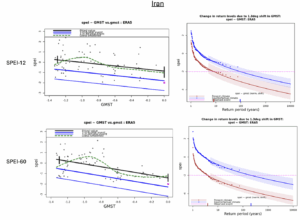

Table 1: Estimated return periods of SPEI-12 and SPEI-60 over Iran and the TE-Basin, along with the respective changes in probability ratio and magnitudes associated with 1.3°C of global warming. Numbers in brackets are 95% confidence intervals obtained by bootstrapping. The last column shows the estimated SPEI in a 1.3°C cooler climate for events with 2025 return period. These values are obtained by subtracting the magnitude change associated with 1.3 °C of warming from the 2025 SPEI values.
| Dataset | Region 1: Iran | ||||
| Magnitude
(units) |
Return period (years) | Probability Ratio | Change in magnitude
(units) |
Magnitude in pre-industrial climate
(units) |
|
| (1) | (2) | (3) | (4) | (5) | (2)-(5) |
| SPEI-12 | -1.99
‘Extreme’ |
8 (4 to 32) | 11.48(1.79 to 83.75) | -1.1 (-1.9 to -0.22) | -0.89
‘(‘Moderate’ |
| SPEI-60 | -2.00
‘Extreme’ |
4 (3 to 8) | 53.65 (9.68 to 814.5) | -1.72 (-2.4 to -1.02) | -0.28
‘Normal’ |
| Region 2: Tigris-Euphrates Basin | |||||
| SPEI-12 | -1.78
‘Extreme’ |
6 (3 to 21) | 5.82 (1.03 to 33.77) | -0.95 (-1.75 to -0.01) | -0.83
‘Moderate’ |
| SPEI-60 | -2.10
‘Exceptional’ |
3 (2 to 7) | 30.65 (7.32 to 343.27) | -1.95 (-2.84 to -1.08) | -0.15
‘Normal’ |
Overall, the changes in the drought severity and PRs show that as compared to short-term droughts, long-duration drought events have become more frequent as a result of climate change, highlighting important emerging patterns. The wider region of West Asia is naturally arid and characterised by high year-to-year variability in annual total rainfall, and therefore, frequent low rainfall years would have occurred even before humans began warming the climate. This is also reflected in our analysis, where a 1-in-10 year (1-in-5 year ) SPEI-12 in Iran (TE-Basin) would have corresponded to ‘moderate drought’ conditions in the pre-industrial climate. However, with global warming increasing regional temperatures, the contribution from PET reducing water availability has strengthened (see WWA, 2023 Syria, Iran, Iraq Drought for trends long-term PETs with GMST). As a result, droughts are not only becoming more frequent but are also being prolonged by the increasing water demand in a warming world. Further, comparing the results for the five-year-long drought with those from the previous WWA study, the best estimated PR is higher for the five-year-long droughts, again in line with the expectation that droughts are becoming more prolonged and more frequent under climate change (Vicente-Serrano et al., 2010; Mukherjee et al., 2018). When climate change is compounded by other socio-economic stressors such as population growth, urbanisation and agricultural expansion, recovery between low-rainfall years becomes increasingly difficult, further prolonging and intensifying drought conditions.
Results: Trends in rainfall totals
Additionally, to assess the influence of warming on annual rainfall and on multiple consecutive years of low rainfall, which has been an important driver for lowering river levels and reservoirs drying-up especially in Iran, we analyse trends in annual and five-year rainfall totals, corresponding respectively to the most recent phase of the multi-year drought and to the drought as a whole. A non-stationary Generalised Extreme Value (GEV) distribution that scales exponentially with GMST with the dispersion (the ratio between the standard deviation and the mean) remaining constant over time is used to model rainfall.
Fig. 3 shows the trends in the rainfall totals associated with GMST in both regions and for both accumulations, along with the respective return period plots. Table 2 summarises the results. The annual and five-year accumulated rainfall have return periods ranging 12 to 25 years in today’s climate. The observed five-year rainfall over Iran is relatively rare, corresponding to a return period of approximately 25 years, indicating only a ~4% probability of experiencing rainfall totals as low as those recorded during 2021-2025. Despite the high year-to-year variability in the annual rainfall in both regions, there is an emerging decreasing trend associated with GMST ( as seen by the red lines visible below the blue lines indicating that low rainfall events are becoming more frequent and drier in today’s climate (right panels in Figure 3). The trends are more discernible for the five-year accumulations suggesting relatively stronger influence of warming on multi-year droughts. However, these changes are small, with uncertainties encompassing no change (see Table 2), which is in part driven by high variability. Therefore, we refrain from making a quantitative assessment about the role of climate change on rainfall lows, but note that the observed tendencies point toward warming contributing to more frequent and persistent periods of low rainfall.
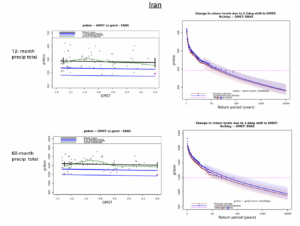

| Dataset | Region 1: Iran | |||
| Magnitude | Return period (years) | Probability Ratio | Change in magnitude
(%) |
|
| precip-12 | 192.3 mm | 18 (7 to 67) | 1.36 (0.31 to 5.84) | -4.1% (-20.87% to +15.92%) |
| precip-60 | 1192.88 mm | 25 (10 to 93) | 1.66 (0.31 to 11.4) | -2.3% (-9.44% to +5.25%) |
| Region 2: Tigris-Euphrates Basin | ||||
| precip-12 | 276.26 mm | 12 (5 to 35) | 1.26 (0.33 to 5.56) | -3.62% (-22.03% to +17.74%) |
| precip-60 | 1676.91 mm | 15 (6 to 56) | 3 (0.7 to 18.67) | -5.09% (-11.74% to +1.75%) |



